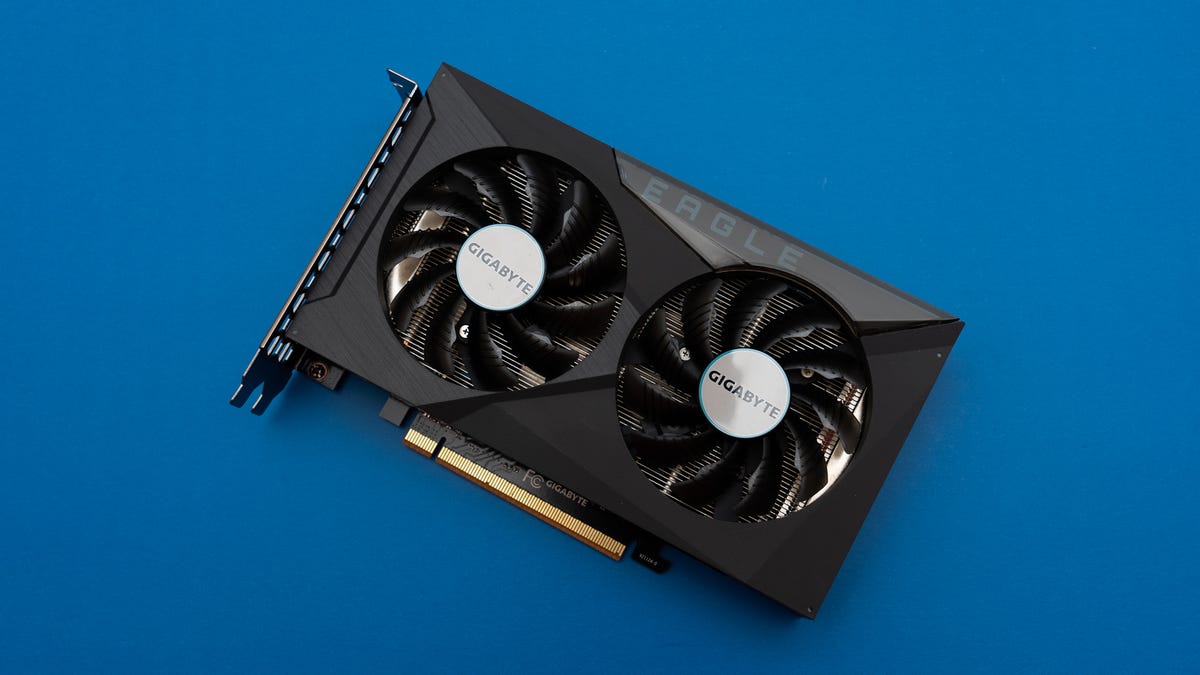AMD Radeon RX 6500 XT reviewed: Possibly the moped of gaming GPUs
A mystery wrapped in an enigma for the 1080p GPU buyer on a budget.

AMD is betting on the entry-level Radeon RX 6500 XT desktop graphics processor to scoop up the laggy upgraders still using two-generations-old processors. Intended for budget-priced, 1080p-class gaming, it's aimed at people still who've hung on to the Nvidia GeForce GTX 1050 or 1060 or the smaller pool of folks still using AMD's Radeon RX 500-series GPUs.
It aims to be aggressively priced. AMD's aiming at $199, which roughly converts to £150 or AU$280, but converted prices don't reflect international pricing at all. It's unlikely that we'll see anything that low, however, thanks to inflation and rampant shortages. Even the base Gigabyte Eagle 4G model I tested has a target price of $260, which I'm not sure it will ever hit. And the company's step-up RX 6500 XT Gaming OC 4G, which can draw more power and has three fans instead of two for some overclocking latitude, has a manufacturer price of $300.
The big question is how it compares to Nvidia's imminent RTX 3050. It's a more expensive card at around $249, but one with a lot more memory (among other things) that might be worth the extra spend. When you also consider the question of how much the RX 6500 XT will really end up costing and whether it will actually be in stock, you might conclude that a card you can get is better than one you can't.
Like all GPUs in this class, AMD's not offering its own branded card. It's smaller and draws less power than its siblings, which makes it a good fit for older systems that have a 500-watt power supply or compact cases that weren't built with today's mammoth cards in mind. There's also an even more basic model specific to prebuilt systems, the RX 6400, AMD's attempt to displace the GTX 1650 or RTX 3050 in sub-$1,000 and low-power gaming PCs.
Gigabyte Radeon RX 6500 XT Eagle 4G
| Memory | 4GB GDDR6 |
|---|---|
| Memory bandwidth (GBps) | 144 |
| GPU clock (GHz, base/boost) | 2.6/2.82 |
| Memory data rate/Interface | 18Gbps/64 bit |
| Peak texture fill rate (gigatexels per second) | 180.2 |
| Compute Units and Ray Accelerators | 16 |
| Stream cores | 1,024 |
| Texture mapping units | 64 |
| TGP/min PSU (watts) | 107/400 |
| Bus | PCIe 4.0 x 4 |
| Size | 2 slots; 7.6 in/192mm long |
| Connections | 1 x HDMI 2.1, 1 x DisplayPort 1.4 |
| Price | $199 (AMD target price); $260 board price |
| Ship date | Jan. 19, 2022 |
A few characteristics distinguish the 6500 XT from compatriots and competitors. It's only got 4GB GDDR6 memory, which may put it out of the running for some games and graphics work. Even games with independent HD texture packs can weigh down that little memory for 1080p, and large 3D models can overwhelm it, so it's not great for that type of pro graphics on a budget.
It only supports four PCIe 4.0 lanes and has a narrow 64-bit memory interface, which results in low overall bandwidth. It has roughly twice the bandwidth on PCIe 4 than PCI 3 (as tested), which theoretically makes it a bad fit for the older system you'd likely be using it in, but it's hard to pin down exactly when that matters. I ran into a few cases where it might, such as Maya and 3DS Max rendering and possibly with certain settings in Rift Breaker, Shadow of the Tomb Raider and some others, but there are just too many variables to narrow it down to the bus with my setup.
It may not be an issue for others, but I don't like that it only has a single DisplayPort connector. HDMI tends to be my connection of last resort, in part because then I don't have to worry about the different capabilities of each when I'm swapping monitors around. Limiting it to two connectors is a necessary evil to hit the power, size and price targets, but if it matters to you then you'll have to strike cards with this particular chip off your list.
I also found its performance... unexciting. It offers decent frame rates for a lot of games at 1080p, but for AAA titles such as Guardians of the Galaxy and Shadow of the Tomb Raider, you end up compromising on quality or fiddling around with AMD's FidelityFX or generic Radeon speed-boosting technologies. In Far Cry 6, for instance, I was not happy with any visual results that delivered decent frame rates.
It seems that the tradeoffs make the 6500 XT sufficiently inferior to even the RX 6600 that the money you save might not be worth it. I'll have to reserve that judgment for when we see where actual prices end up and how the RTX 3050 stacks up.
Performance snapshot
Far Cry 5 (1080p)
3DMark Time Spy
3DMark Fire Strike Ultra
Configurations
| MSI Aegis RS (RTX 3060) | Microsoft Windows 10 Home (2H20); 3.8GHz Intel Core i7-10700K; 16GB DDR4 SDRAM 3,000; 12GB EVGA GeForce RTX 3060 XC Black Gaming; 1TB SSD |
|---|---|
| MSI Aegis RS (RX 6500 XT) | Microsoft Windows 10 Home (21H1); 3.8GHz Intel Core i7-10700K; 32GB DDR4 SDRAM 3,200; 4GB Gigabyte Eagle 4G Radeon RX 6500 XT; 1TB SSD |
| MSI Aegis RS (RX 6600 XT) | Microsoft Windows 10 Home (21H1); 3.8GHz Intel Core i7-10700K; 32GB DDR4 SDRAM 3,200; 8GB Asus ROG Strix Radeon RX 6600 XT OC; 1TB SSD |

